Etiquette at Korean Meals
Introduction
Dining etiquette in South Korea holds paramount importance as it reflects cultural values, social harmony, and respect. Meals are not just about nourishment but also about fostering connections. Observing proper etiquette, such as using two hands to pass or receive dishes, showing deference to elders by waiting for them to start, and never sticking chopsticks upright in a bowl, demonstrates respect for tradition and elders. Moreover, it plays a significant role in business and social interactions, influencing relationships and success.
In South Korea, good manners at the dining table are a symbol of one’s character and willingness to maintain harmony, making them crucial for personal and professional relationships.
Table of Contents
The Significance in South Korean Culture
Dining etiquette holds great significance in South Korean culture. It serves as a reflection of the country’s deep-rooted traditions and values. South Koreans place a strong emphasis on respect for elders and maintaining social harmony. Beyond the cultural aspect, dining etiquette also plays a pivotal role in various social interactions, including business and personal relationships. South Koreans believe that displaying good manners at the dining table is indicative of one’s character and their commitment to fostering harmony and positive relationships.

Historical Context
Origins of South Korean Dining Etiquette
South Korean dining etiquette originates in Confucianism, which has deeply influenced the country’s social and cultural norms for centuries. Confucian principles prioritize respect, hierarchy, and harmonious relationships within society. These ideals have shaped South Korea’s dining customs, emphasizing respect for elders, proper seating arrangements, and the use of two hands to give or receive items.
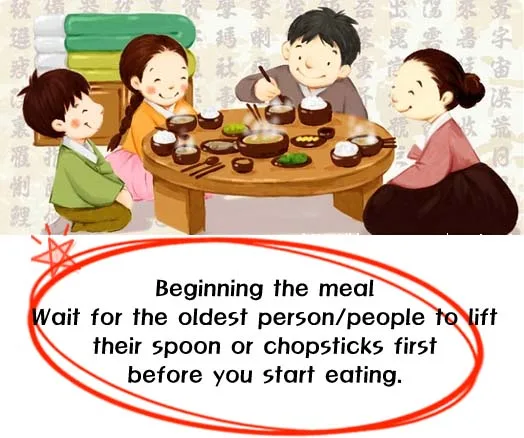
The practice of showing respect through these etiquette rules has evolved over generations and remains a fundamental part of South Korean culture. It not only reflects the nation’s Confucian heritage but also underscores the value of maintaining social harmony and respect for tradition.
Influences on Modern Practices
Modern South Korean dining practices have been influenced by a confluence of factors. Traditional Confucian values still play a significant role, emphasizing respect for elders, hierarchy, and harmony. However, globalization, urbanization, and exposure to international cultures have led to some adaptations. Western-style dining and the influence of global fast-food chains have become more prevalent, especially among the younger generation. Yet, traditional etiquette remains essential, as it reflects South Korea’s cultural identity.
The fusion of these influences results in a dynamic dining landscape where both traditional customs and modern practices coexist, highlighting the nation’s ability to preserve heritage while embracing contemporary changes.
Table Settings and Arrangements
Traditional vs. Modern Settings
Traditional and modern settings in South Korean dining present a fascinating duality in culinary culture. Traditional settings are steeped in ancient customs, featuring low dining tables, floor seating, and traditional utensils like metal chopsticks and spoons. These settings emphasize hierarchy, respect for elders, and adherence to strict etiquette.

Conversely, modern settings have adapted to contemporary lifestyles. Urban areas commonly employ Western-style tables and chairs, and fast-food venues are prevalent. Nevertheless, traditional etiquette maintains its significance, especially in formal or family gatherings, where cultural customs and respect for tradition endure. This coexistence of tradition and modernity exemplifies South Korea’s ability to navigate cultural shifts while preserving its rich heritage in the realm of dining.
Use of Chopsticks and Utensils
In South Korean dining etiquette, the use of chopsticks and utensils is both an art and a symbol of cultural identity. While chopsticks are the primary eating utensil, South Korea is distinctive for its use of metal chopsticks, which are believed to have originated from the royal court. These metal chopsticks require a deft hand as they tend to conduct heat, making them challenging for beginners. In addition to chopsticks, a metal spoon is commonly used for rice and soupy dishes. The way one handles these utensils, with respect for the elderly and proper etiquette, reflects the deep-seated cultural values of respect, hierarchy, and harmony in South Korean society.
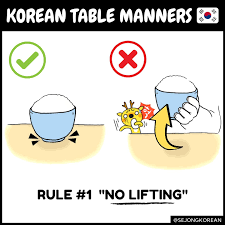
Place Settings and Seating Arrangements
Place settings and seating arrangements are integral components of South Korean dining etiquette, reflecting the nation’s deep-seated values of respect, hierarchy, and social harmony. Traditional settings often feature low dining tables with floor seating, where guests sit cross-legged. The arrangement emphasizes the hierarchical order, with the most senior members seated first, usually facing the entrance. Guests are expected to bow when entering and exiting the dining area as a sign of respect.

Place settings typically include individual rice and soup bowls, as well as a variety of side dishes shared communally. Customarily, diners use metal chopsticks and a spoon, each with its specific purpose.
In more modern and urban settings, Western-style dining tables and chairs are common, especially in restaurants. However, traditional seating arrangements and etiquette still play a significant role in formal gatherings, highlighting the coexistence of tradition and modernity in South Korean dining culture. Whether in traditional or modern settings, the way individuals navigate these dining customs reflects their adherence to cultural norms and their respect for tradition, reinforcing the importance of maintaining social harmony and hierarchical respect in South Korean society.
Korean Dining Terminology
Key Phrases for Ordering
When ordering food in South Korea, using key phrases can enhance your dining experience and help you navigate the menu effectively. Here are some essential phrases to keep in mind:
- Hello/Hi – “안녕하세요” (Annyeonghaseyo) – A polite greeting to start your interaction.
- Menu, Please – “메뉴 주세요” (Menyu juseyo) – Requesting the menu.
- I would like… – “제가 … 주문하겠어요” (Jega … jumunhagesseoyo) – Indicate your order.
- Spicy/Mild – “매운/안 매운” (Maeun/An Maeun) – Specify your preferred level of spiciness.
- Vegetarian – “채식주의자” (Chaesik juuija) – If you have dietary restrictions.
- Water – “물” (Mul) – Request for water.
- Check, Please – “계산서 주세요” (Gyesanseo juseyo) – Indicate you’d like the bill.
- Thank you – “감사합니다” (Gamsahamnida) – Express gratitude when the meal is over.
Politeness and Respectful Language
Politeness and the use of respectful language are crucial in South Korean communication, extending to dining experiences. South Koreans place great emphasis on hierarchical respect and maintaining harmony. When ordering food, it’s common to use honorific language, such as “주세요” (juseyo), which is a polite way to ask for something. Addressing restaurant staff with titles like “서빙” (seobing) for a server or “주방장” (jubangjang) for the chef demonstrates respect. It’s customary to bow as a sign of appreciation before and after the meal.
These language and behavioral norms underscore the importance of maintaining harmony and showing respect for both the culinary culture and the individuals who provide the service, creating a positive and culturally enriching dining experience in South Korea.
The Role of Kimchi
Kimchi is a Staple
Kimchi is a staple in South Korean cuisine, serving as a symbol of the nation’s culinary identity. This fermented, spicy, and tangy vegetable dish, usually made with Napa cabbage and red pepper flakes, is consumed with nearly every meal and reflects the rich history and flavors of South Korean gastronomy.
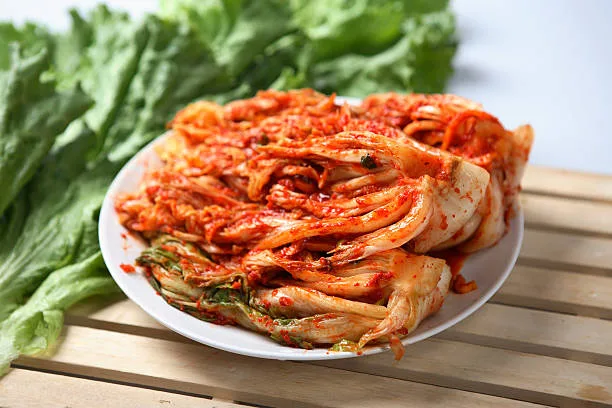
Serving and Handling Kimchi
Serving and handling kimchi in South Korea is a practiced art. It’s typically presented in small side dishes at every meal, and diners use chopsticks or metal spoons to portion it onto their plates. The handling of kimchi should be respectful; it’s considered bad manners to double-dip, and utensils used for kimchi should not touch the diners’ mouths. Given its pungent aroma and spicy taste, it’s important to be mindful of other diners, as kimchi is an integral part of South Korean dining etiquette, adding a burst of flavor and tradition to every meal.
Sharing and Social Dynamics
Sharing Dishes
Sharing dishes is a fundamental aspect of South Korean dining culture, reinforcing the values of togetherness and community. The meal often consists of a variety of communal side dishes like kimchi, pickled vegetables, and grilled meats. Diners use their chopsticks or utensils to take portions from the shared dishes, promoting a sense of sharing and interconnectedness. It’s customary to serve others before yourself, show respect for fellow diners, and express gratitude when someone serves you. Sharing dishes fosters a sense of unity and social harmony, making South Korean dining not only about sustenance but also about strengthening bonds and cultural traditions.
Pouring Drinks
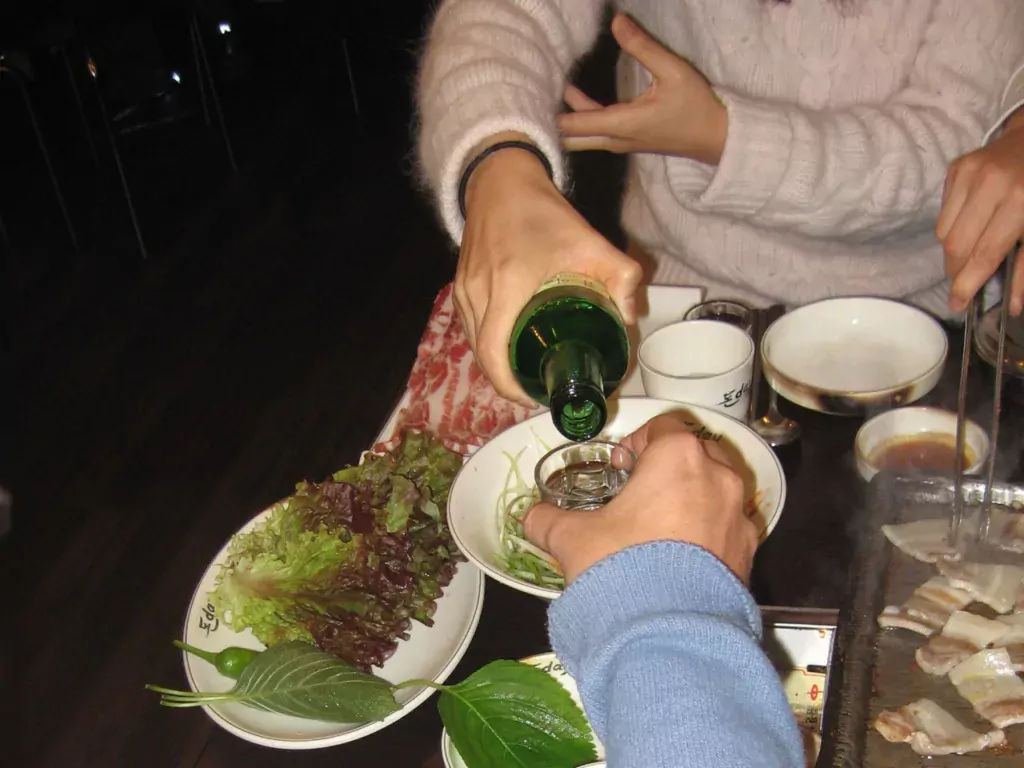
Pouring drinks in South Korea is a ritual that reflects deep-seated cultural values of respect and communal bonds. When someone offers to pour a drink, it’s a sign of respect and friendship. The receiver should hold their cup with both hands as a sign of appreciation and deference. Additionally, it’s customary to turn away from those older or more senior when drinking. Refilling others’ cups before they’re empty signifies attentiveness and respect. This ritual creates a unique atmosphere of camaraderie and connection, underscoring the significance of interpersonal relationships in South Korean society, not just during meals but in daily life.
Paying the Bill
Paying the bill in South Korean dining culture involves its own set of customs and courtesies. It’s customary for the person who initiated the meal or is considered the senior member of the group to pay. Expressing a willingness to cover the bill is a sign of respect and appreciation. Sometimes, there may be a polite back-and-forth as individuals offer to pay, but ultimately, the designated payer settles it. Splitting the bill among friends is becoming more common in urban areas, though traditional customs of the senior or host covering the costs still hold sway. This practice reflects the importance of hierarchy, gratitude, and reciprocity in South Korean social interactions.
Hierarchy and Respect
Showing Respect to Elders
In South Korean culture, showing respect to elders is a fundamental aspect of daily life, including dining. Elders are given precedence in seating, they’re served first, and it’s customary to wait for them to begin the meal. Using two hands when giving or receiving items, like dishes or utensils, is a sign of deference. When pouring drinks, turning away slightly is a gesture of respect. These practices underscore the deep-rooted Confucian values of respect for authority and hierarchy, fostering harmonious relationships and upholding the cultural significance of age and wisdom in South Korean society.
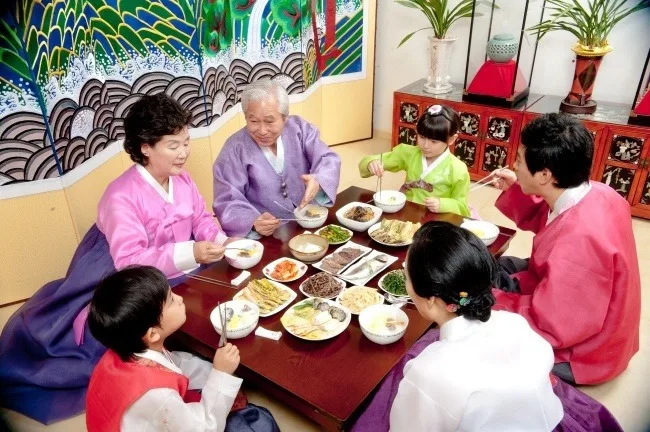
Bowing and Greetings
Bowing and greetings are vital in South Korean dining etiquette. When entering a dining establishment, it’s customary to offer a slight bow as a sign of respect and acknowledgment. Saying “안녕하세요” (Annyeonghaseyo) or “hello” is also common. When leaving, a final bow is considered polite. Within the meal, diners may bow to show appreciation for being served, and the host or elder may receive a deeper bow as a gesture of gratitude. These gestures highlight the importance of politeness, hierarchy, and respect in South Korean culture, enhancing the dining experience with traditional courtesies.
Eating Etiquette for Specific Dishes
Noodles and Soups
When it comes to South Korean etiquette for eating noodles and soups, it’s essential to remember a few key practices. Slurping noodles is generally acceptable and even encouraged, as it’s a sign of enjoying the meal. Use chopsticks to lift noodles, and a spoon for the broth, ensuring you don’t leave any leftover soup. Don’t cut or break long noodles, as they symbolize a long life. When eating spicy soups, it’s polite to have a sip of water to cleanse the palate. Adhering to these customs shows respect for the food and the cultural traditions surrounding it.
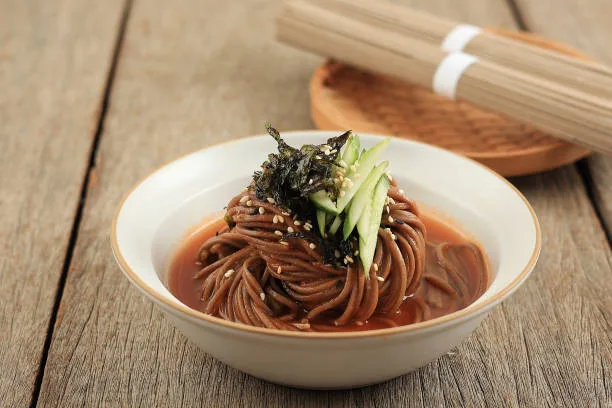
BBQ and Grilled Meats
Eating BBQ and grilled meats in South Korea involves specific etiquette and customs. Use tongs or chopsticks to handle the meat while it’s on the grill, and avoid touching it with your hands. It’s customary to wait for the host or eldest person to flip the meat and then start eating once it’s cooked. Don’t cut the meat with your own chopsticks; instead, use scissors provided at the table. Wrapping grilled meat in lettuce leaves and adding condiments is common, but do it discreetly and avoid making a mess. Express appreciation and gratitude to the cook or host, emphasizing the importance of respect and communal dining experiences.
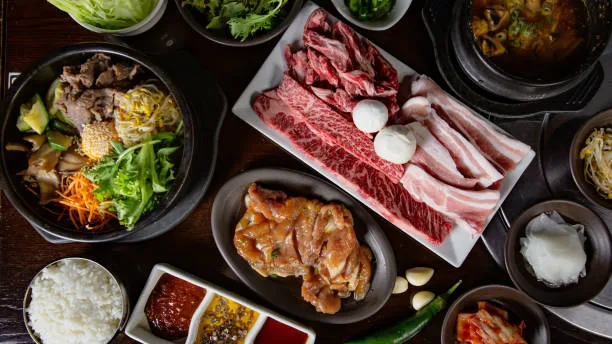
Dress Code
Dressing Appropriately for Dining
Dressing appropriately for dining in South Korea is vital, as it demonstrates respect for the dining experience and the people you’re dining with. Typically, attire should be neat and well-kept, avoiding overly casual or revealing clothing. When dining at a more formal or traditional establishment, it’s advisable to opt for business casual or smart casual wear. Wearing clean and comfortable clothes, including the removal of shoes in traditional settings, ensures that you can fully immerse yourself in the meal without causing discomfort or distractions. Proper attire reflects an understanding of and respect for South Korean dining culture.
Removing Shoes
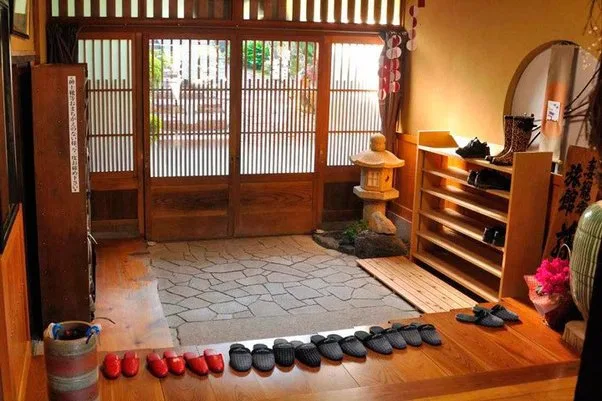
In South Korean dining culture, it’s common to remove your shoes when entering traditional restaurants or private homes. This practice serves both hygienic and cultural purposes. It keeps dining areas clean and is seen as a sign of respect. Upon entering, you should remove your shoes from the designated area, usually near the entrance, and switch to slippers or provided indoor footwear. This tradition reflects the value of maintaining cleanliness in dining spaces and is a gesture of honoring the environment and traditions of the host’s home or restaurant.
Manners in the Home vs. Restaurants
Home Dining Etiquette
Home dining etiquette in South Korea upholds values of respect and social harmony. When entering someone’s home, it’s customary to remove your shoes and don indoor slippers. Wait for the host to indicate where you should sit, as seating arrangements are often based on hierarchy. Bowing is a sign of respect, and it’s polite to bring a small gift, like fruit or snacks, for the host. During the meal, wait for the eldest or the host to start eating and express gratitude for the food. Clear your dishes and participate in cleaning up to show appreciation. These practices reflect the importance of familial and social bonds in South Korean culture.
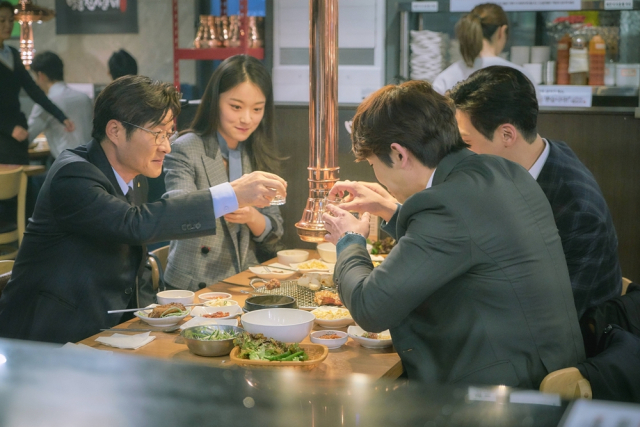
Restaurant Dining Etiquette
Restaurant dining etiquette in South Korea is an extension of traditional values, emphasizing respect and social harmony. Upon entering, greet the staff with “안녕하세요” (Annyeonghaseyo). Wait to be seated and remove your shoes in traditional restaurants if indicated. Menus typically offer a wide variety of dishes, with many small side dishes (banchan). Practice polite behaviors like waiting for the eldest to order and using two hands when accepting or giving items. Avoid sticking chopsticks upright in rice, as this resembles a funeral ritual. Express gratitude with a simple bow when you’re done. Restaurant dining etiquette underscores the significance of respecting tradition and hierarchy in South Korean society.
Special Occasions and Festivals
Etiquette During Chuseok
Chuseok, also known as Korean Thanksgiving Day, is a significant holiday in South Korea, and observing proper etiquette during this time is essential. Families gather to pay respects to ancestors and share a special feast. During Chuseok, it’s customary to wear traditional Hanbok attire. A deep bow, known as Charye, is performed at ancestral gravesites, followed by a ritual offering of food. At the family table, the eldest member initiates the meal, and it’s polite to use two hands when passing or receiving dishes. Chuseok is a time for honoring tradition, showing respect for elders, and reinforcing family bonds, making etiquette a vital part of the celebration.
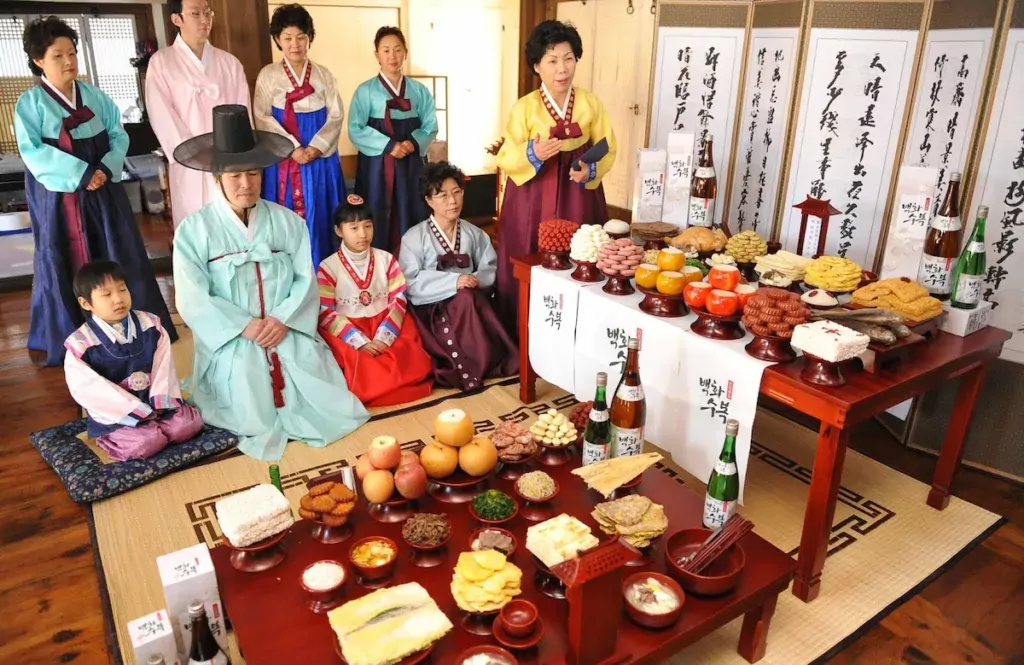
Dining Etiquette During Weddings
Dining etiquette during South Korean weddings is marked by traditions that celebrate the union of two families. Guests are often seated in a specific order, emphasizing hierarchy and relationships. It’s customary for the couple to serve their parents and elders a deep bow as a sign of respect. When receiving and offering dishes, two hands are used, showcasing politeness and deference. The practice of sharing dishes underscores unity and familial bonds. Guests express their well-wishes through respectful behavior and toasts, embodying the importance of harmony and respect during this significant life event.
Vegetarian and Dietary Preferences
Accommodating Dietary Restrictions
Accommodating dietary restrictions in South Korea can sometimes be challenging due to the prevalence of meat, fish, and seafood in traditional dishes. However, as awareness of various dietary needs has grown, many restaurants and hosts are becoming more flexible. It’s essential to communicate your dietary restrictions clearly and in advance when dining out or attending gatherings. Vegetarian and vegan options are becoming more widely available, and chefs may make adjustments to dishes to accommodate allergies or other dietary requirements. Respectful communication and advance notice are key to ensuring a positive dining experience while adhering to dietary restrictions in South Korea.
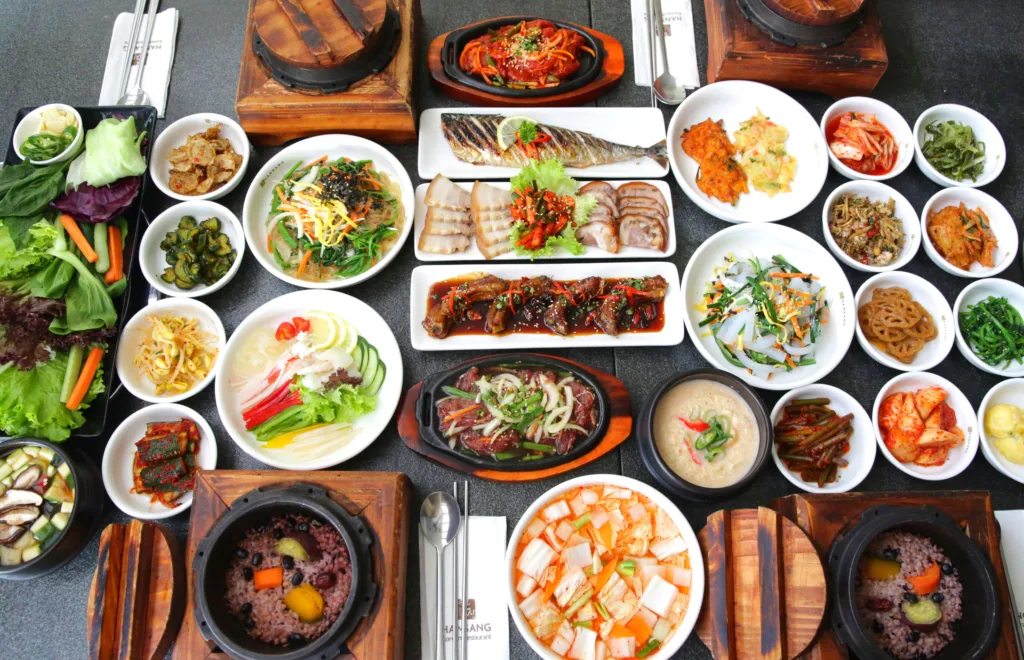
Vegan and Vegetarian Options
South Korea, traditionally known for its meat and seafood-heavy cuisine, has seen an increase in vegan and vegetarian options in recent years. In major cities, you can find specialized vegan and vegetarian restaurants offering a variety of plant-based dishes. Traditional dishes like bibimbap can be adapted without meat, and there’s an increasing awareness of dietary preferences. However, it’s still advisable to communicate your dietary needs clearly, especially in smaller towns. South Korea’s evolving food scene now provides more choices for those seeking vegan or vegetarian options while exploring the country’s rich culinary culture.
Handling Dining Mishaps
Dropping Utensils
In South Korean dining etiquette, dropping utensils, especially chopsticks, is considered disrespectful and is often associated with bad luck. When utensils are dropped, it’s customary to apologize and request new ones, avoiding using the fallen ones. Sticking chopsticks vertically in a bowl of rice is particularly taboo, as it resembles a funeral ritual. This practice is avoided as it symbolizes death. South Koreans take care to handle utensils with care, emphasizing the significance of respect for tradition and social harmony in dining.
Spilling Food or Drinks
Spilling food or drinks in South Korean dining culture is viewed as inauspicious and impolite. While accidents can happen, it’s important to apologize if something is spilled and offer to clean it up. It’s especially important to be cautious and mindful of your surroundings to avoid such mishaps, as they can disrupt the harmony of the meal. South Koreans place great importance on maintaining cleanliness and avoiding waste, so spilling food or drinks is generally considered disrespectful and against the principles of respect and proper etiquette in the country’s dining traditions.
Communication in Dining
Conversation Topics
In South Korean dining culture, conversations often revolve around a wide range of topics. It’s common to discuss family, well-being, and daily life, expressing genuine interest in one another. Sharing stories about work, travel experiences, and hobbies is also a typical conversation starter. South Koreans may also discuss current events, entertainment, and popular culture. However, there are sensitive topics to avoid, such as politics and personal finances. The key is to engage in conversations that promote a harmonious and positive dining atmosphere, reinforcing the importance of building relationships and connections through meaningful dialogue during meals.
Non-verbal Communication
Non-verbal communication is highly significant in South Korean dining culture. Polite body language, such as maintaining good posture and keeping one’s elbows off the table, is essential. Bowing is a common gesture to express gratitude and respect. Eye contact should be moderate, avoiding prolonged staring, which may be seen as impolite. Using both hands when giving or receiving items, like dishes or utensils, demonstrates deference and respect. Overall, non-verbal cues play a substantial role in conveying respect, and hierarchy, and maintaining social harmony at the dining table in South Korea.
Summary and Key Takeaways
The Role of Dining Etiquette in South Korean Society
Dining etiquette is a cornerstone of South Korean society, reflecting the nation’s deep-rooted values of respect, hierarchy, and social harmony. Proper manners at the dining table are a symbol of one’s character, highlighting adherence to cultural traditions and respect for elders. Beyond this, dining etiquette extends to business and social interactions, where it influences relationships and success. South Korea’s emphasis on good manners during meals exemplifies its commitment to tradition and harmony. It showcases how even the smallest details in etiquette can carry profound cultural and social significance, shaping interactions, relationships, and the nation’s overall identity.
FAQs on South Korean Dining Etiquette
- What are the most common dining customs in South Korea?
Common dining customs in South Korea include using two hands, waiting for the eldest to start, and bowing as a sign of respect.
- How should I use chopsticks correctly in South Korea?
Hold chopsticks near the top with your fingers and use the lower one to control movement. Practice for precision.
- Is it appropriate to tip at restaurants in South Korea?
Tipping is not a customary practice in South Korea and may even be considered rude in some instances.
- What should I do if I don’t like a particular dish?
If you don’t like a particular dish in South Korea, it’s considered polite to simply leave it and not make a fuss.
- Can I bring gifts to a South Korean host when invited for a meal?
Yes, bringing a small gift like fruit or snacks when invited to a South Korean host’s meal is considered a polite gesture.
- What are the dos and don’ts when dining with South Koreans?
Do use both hands, wait for elders, and bow. Don’t stick chopsticks upright in rice, start eating before others, or tip.

